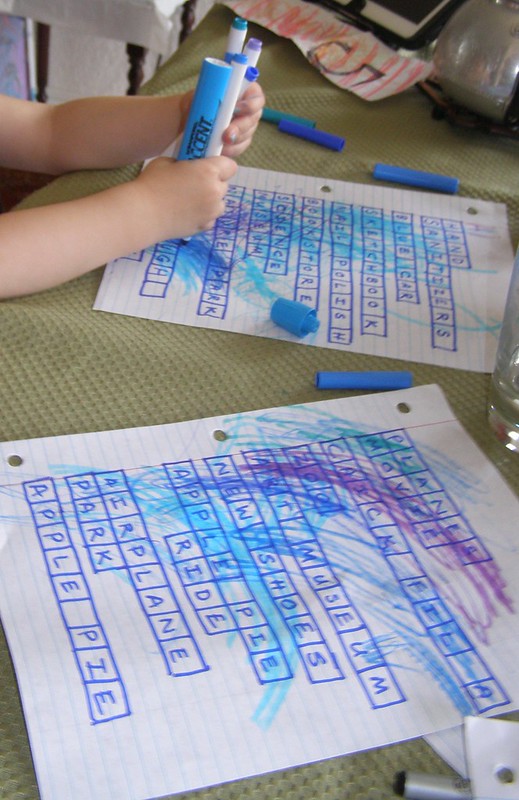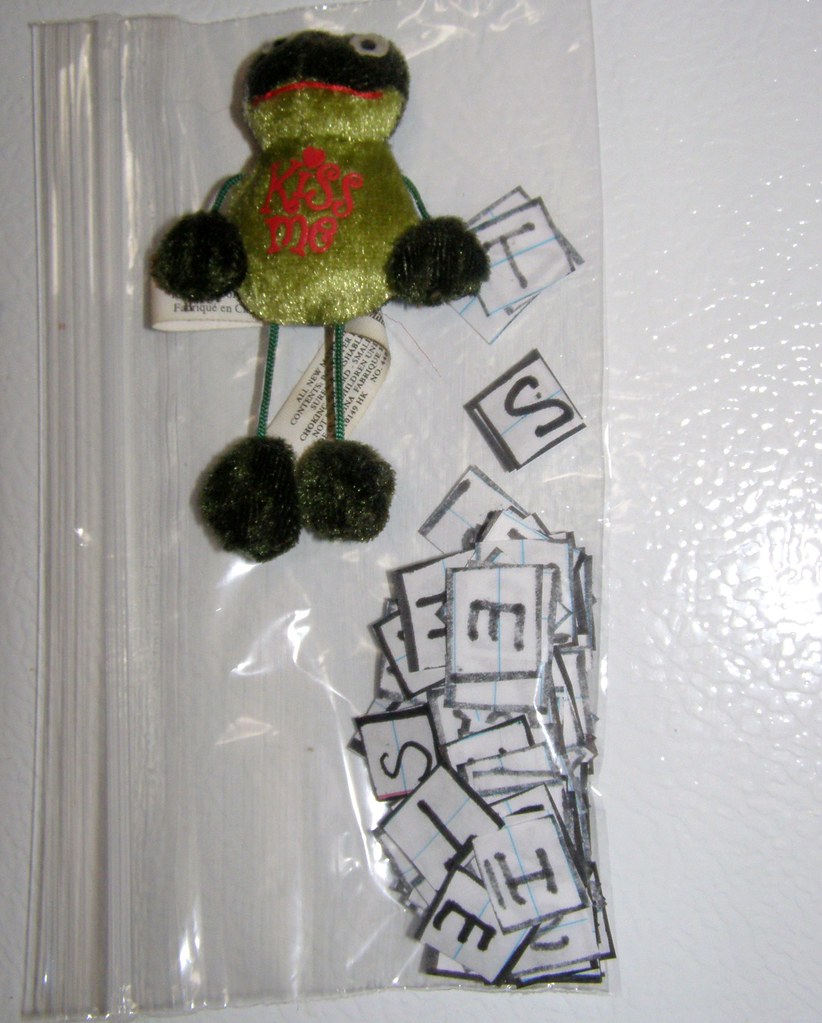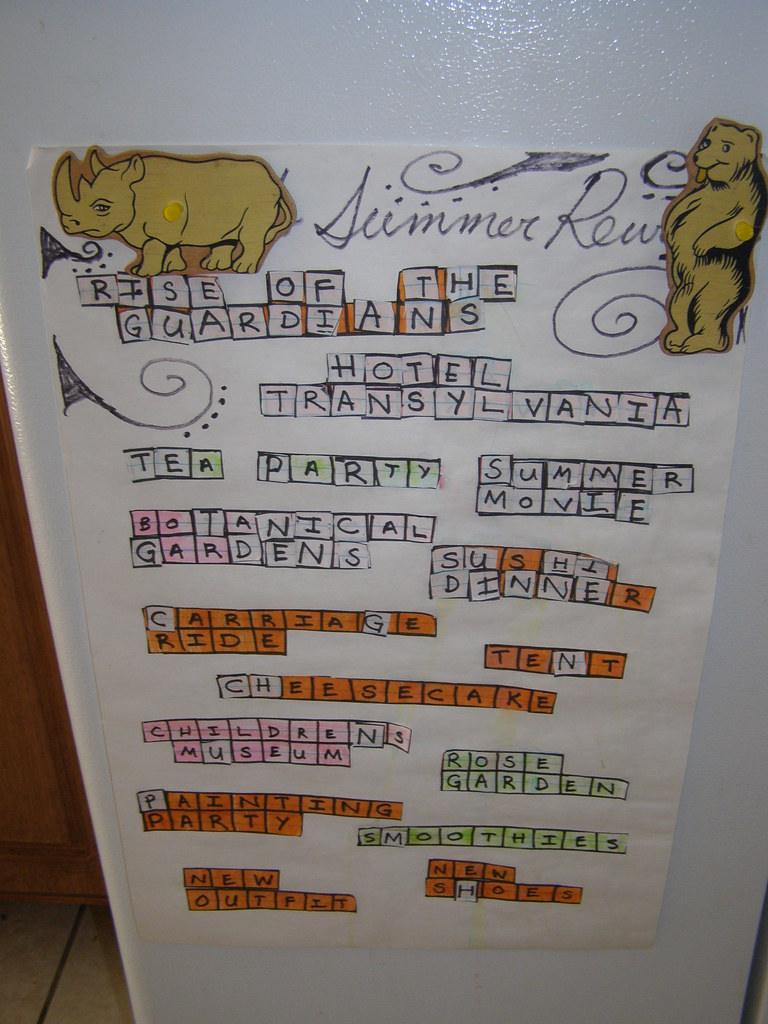That being said, I apologize for the lack of posts on here lately. After school wrapped up for the year, I went a little craft mad. I currently have eight new projects to share with you. It's just a matter of getting the posts typed up. Without further ado, here is one of them.
Making a Quick and Easy Rewards Chart
 I found a really cute idea for rewards on Pinterest that was designed for a classroom.The basic premise was to have a reward for the class, which would be earned over time. The students would earn letters, which they could affix to the chart to spell out the name of their reward. Check out the original post on An Educator's Life here.
I found a really cute idea for rewards on Pinterest that was designed for a classroom.The basic premise was to have a reward for the class, which would be earned over time. The students would earn letters, which they could affix to the chart to spell out the name of their reward. Check out the original post on An Educator's Life here. Okay, so I don't have a full class. I have one almost first-grader and a three-year-old, but I loved the idea. Not wanting to spend any money on a rewards chart that might not work, I got out the paper and markers to make a super cheap version.
Materials (per chart)
- 1 12 x 18" sheet of paper
- 4 sheets lined paper (or graph or copy)
- 1 permanent marker
- glue stick
- colored markers
1. Brainstorm reward ideas.
You'll need about 15-18 per chart. We came up with some pretty neat ideas.Educational Outings: Science Museum, Art Museum, Children's Museum, Zoo, Airplane Park, Nature Park, Botanical Gardens
Free But Fun: chair tent in the living room, playtime on the top bunk (which is still off-limits until the little one is a bit older), Rose Garden
Parties: tea party, painting party
Treats: favorite fast food, smoothie date, sushi dinner, apple pie, cheesecake
New Stuff: outfit, shoes, sketchbook, Matchbox Car, playdough, book, Playmobil toys
Just for Fun: summer movie program, movie date, carriage ride
Wording is important here. The longer the name of the reward, the more effort it will take to earn. For example, if a trip to the zoo would be very cheap and easy for your family to accomplish, just spell out "zoo". If your zoo is expensive and/or difficult to get to, you might write "zoological park". I knew our oldest really wanted a couple of new movies, so I spelled out "Rise of the Guardians" and "Hotel Transylvania".
2. Make the rewards boxes.
 Now, to write the rewards for the charts. I just did mine freehand since this was an experiment to see if the girls would respond well to this type of reward system. On lined paper, I drew square boxes and wrote the name of the reward with capital letters, one per box. To make life easier on myself, I used a black permanent marker for all of one girl's letters and a blue permanent marker for the other one.
Now, to write the rewards for the charts. I just did mine freehand since this was an experiment to see if the girls would respond well to this type of reward system. On lined paper, I drew square boxes and wrote the name of the reward with capital letters, one per box. To make life easier on myself, I used a black permanent marker for all of one girl's letters and a blue permanent marker for the other one.You'll need two identical sets of letters, one for the reward chart and one to draw out of a bag. I made a second set by laying a blank sheet of paper on top of the first, tracing the same boxes, and writing in the same rewards.

For the rewards I would be pasting on the chart, I let the kids decorate their own. (The second set needs to be either left plain white or colored differently enough to distinguish when the reward has been earned). The three-year-old used three markers in each hand and scribbled all over the papers. The six-year-old meticulously colored each of her rewards with a different color. After they were finished, I cut out the rewards in blocks of words and pasted them to the large piece of paper. I had the girls organize their charts by priority. What they wanted to earn first went at the top of the chart. Then I added some decorative flourishes.
 3. Make the letters to be earned.
3. Make the letters to be earned.
To make the letters to be earned, I cut apart the second (uncolored) set of letters. Each letter should occupy its own square. With luck, the squares will be the same size as the ones on the chart. Discard any blank boxes, such as those between letters. Note: this picture is of the six-year-old's letters, not the three-year-old's. They are written in black, not blue. It prevents any confusion if there happens to be a random letter on the floor.
4. As letters are earned, paste them on the chart.
So let's say the three-year-old puts away her laundry. She gets to pull a letter from her baggie. Then she matches it up and glues it onto a matching letter on her chart. When she has earned all the letters in the word, she gets the reward. At first I thought this would only work with the six-year-old, but the three-year-old is surprising me with both her desire to earn letters and her ability to match the letters she earns with the words on the chart.5. As rewards are redeemed, mark them off the chart.
Our preferred method has been to write the date in large numbers and letters over the name of the reward (which I had not yet done at the time of the pictures on the left). That way, the kids see when they earned that reward and when I fulfilled my promise to give it to them. Although right now, the three-year-old has earned three rewards that I have not yet been able to do with her.So there you have it. It's cheap and easy, but seems to be working well for us.



No comments:
Post a Comment